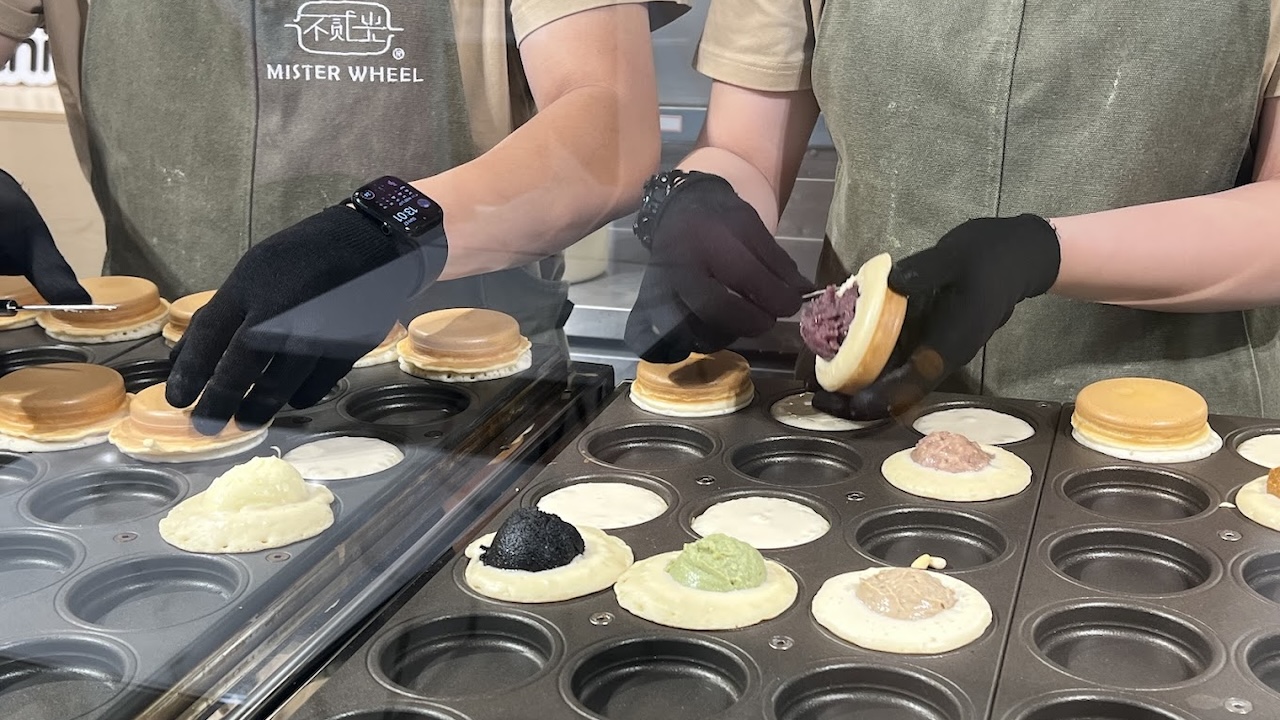For the last thirty years of my attendance, the Edinburgh Festival Fringe has always been too big to grasp in its entirety. In 2025, with a record 4,000 registered shows, the challenge is not just quantitative but philosophical: how to make sense of a vast, chaotic ecology of performance that resists singular narratives? To write about the Fringe is necessarily to write from a place of partiality, to acknowledge that any map is provisional, any overview incomplete. In some of the previous years (see 2023 and 2024) I have attempted this task in different ways; this year in keeping with the times, I have asked ChatGPT to help me make sense of my 19 typed up pages of notes, and to suggest some themes that emerge from across this incidental selection.
The constellation of 20 shows I encountered over five days represents only a sliver of the programme, shaped inevitably by Western touring circuits, personal recommendations, and accidental chance encounters. Absent from this representation, partly because of the scheduling conflicts within my short stay, are entire seasons devoted to Palestine, as well as work from Asia, Africa, and Latin America—voices that might radically alter the narrative. And yet, even this incidental sample speaks of a world in crisis—haunted by war, ecological breakdown, and colonial legacies—but also of resilience, imagination, and joy.
The 2025 Fringe reflected our moment, according to my AI assistant, as one of simultaneous mourning and celebration: a theatre of sweat and tears, activism and escapism, radical participation and nostalgic homage. In what follows, we trace four intersecting themes: theatre as witness, the body as resistance, the rewriting of legacies, and the laboratory of participation. Each points to the Fringe’s enduring paradox: a festival of excess that nonetheless sharpens our sense of perspective.
Theatre as Urgent Witness
Few works ask more directly what it means to make art when lives are at stake than Pussy Riot’s Riot Days. Performed with characteristic ferocity, the show blurs concert, documentary, and ritual action: war footage projected alongside multicoloured balaklavas, a drummer’s relentless beat underscoring vigil-like processions through the audience. At one point, the room falls into stunned silence as the performers invoke Irina Slavina, a Russian activist who self-immolated in protest. Here, theatre is not metaphor but memorial, demanding confrontation with political realities that Western audiences too often consume at a distance.

“Pussy Riot: Riot Days,” no photo credit
If Pussy Riot exemplifies art at the edge of survival, Farah Saleh’s Balfour Reparations stages a more speculative form of political imagination. Set in 2045, this performance lecture-seminar-conference invites us to become members of a reparations committee evaluating the fictive apology Britain issued to Palestine in 2025. Led by Saleh in academic robes, we debate actionable futures, our testimonies woven live into the performance score. Saleh’s subtle choreography as backdrop to the spoken word, while providing welcome somatic release amid cerebral deliberation, also reminds us that reckoning with colonial legacies must be embodied as well as intellectual.


“Balfour Reparations,” by Farah Saleh, photo by Keni Li.
Where Saleh projects forward, Khalid Abdalla’s Nowhere turns inward, mapping seismic world events onto a personal cartography of revolution, counter-revolution, and mourning. Abdalla—world-famous actor, activist, and witness to the Egyptian revolution—weaves confession, stand-up, biography, and live camera work into an intimate solo. His enticingly penned reflections on legacies, personal relationships, and the safe space of theatrical “nowhere” draw the audience gently into a place of collective action. The intimacy of sharing photographs and phone messages on screen is counterbalanced by tricking us into some friendly creative participation – the outcome of which (a portrait exhibition) outlives the duration of the show.
Finally, Andy Smith’s A Citizens’ Assembly pursues democracy through dramatic form itself. Audience members read a script together then, amused by the histrionics of reading the satirical lines, move into a real discussion about the climate crisis. Contributions on the day I saw it ranged from a British woman’s claim that “the most positive thing we can do right now is to be selfish about trying to save humanity” to an Arab participant’s reminder that for those in the Middle East, a reduction of air travel is already a contextual given due to strict visa restrictions. Smith’s insistence on listening—which he models without seeking judgement, debate, or conclusion—produces a fragile microcosm of deliberation whose effect resonates well after exiting the church hall in which it takes place.
Across these works, theatre becomes a civic forum—sometimes urgent, sometimes speculative, sometimes modest in its ambition. The question here is not whether art can change the world, but how it might help us imagine living in it differently.
The Body as Site of Resistance and Joy
If one thread was civic deliberation, another is the insistence of the body—sweating, dancing, crying, burning bright. The 2025 Fringe offers theatre as a space where bodies resist erasure and reclaim pleasure.
Oli Mathiesen’s The Butterfly Who Flew Into the Rave transforms theatre into a nightclub, where three dancers perform an endurance piece in total unison to pounding techno. The choreography integrates drinking, sweat, and aerobics, collapsing the line between art and sport. For Mathiesen, a young Māori choreographer from Aotearoa, the piece was intended as a furious acid-house response to the Covid pandemic. Yet its achievement is not just personal satisfaction but communal complicity: audience members clapping, cheering, and bobbing along until the rave becomes collective ritual.
Where Mathiesen celebrates sweat, Emma Frankland’s No Apologies ignites flames. Framed around the radical wishful thought that “Kurt Cobain was trans,” the show reimagines Nirvana’s 1993 MTV Unplugged concert through classical mythology and pyrotechnic spectacle. By conjuring up a baroque-punk Icarus on stage, Frankland uses scenography to transform personal memory into collective myth. The result, both dazzling and devastating, is a refusal to condone trans shame of any kind, and more: a fight for survival of trans lives.


“No Apologies” by Emma Frankland, photo by Kaleidosshoots
Anemone Valcke and Verona Verbakel’s The Ego pushes embodiment into more uncomfortable territory. Emerging from Ontroerend Goed’s lineage, the piece oscillates between theoretical essay and pornographic fantasy, confession and provocation. Tears stream on camera, while gender-reversed erotica stages a #MeToo vengeance narrative. At its best, the show exposes the raw entanglement of ambition, misogyny, and performance; at its worst, it risks sensationalism. Yet the tension itself—between vulnerability and manipulation—is its most compelling revelation.


“The Ego,” photo by Alexandra Colmenare Corso
By contrast, Little Bulb’s Listen Dance offers a gentler collective embodiment. Band members teach audience members dances of personal significance, from a ceilidh doomed to failure to hora steps from a still remembered bat mitzvah. Failure becomes celebration, care becomes choreography. Non-participation is equally welcome, but few resisted joining in. Here, the radical act is not transgression but conviviality: the joyful democracy of dancing badly together.
In an age of digital mediation and political paralysis, the insistence on embodied presence that all of these shows demand in different ways feels like its own form of resistance.
Rewriting Histories, Resurrecting Ghosts
While some artists look forward and others insist on corporeal immediacy, many grapple with histories, asking what it means to inherit and reimagine legacies.
Emma Howlett’s Aether stages a history of scientific womanhood, from Hypatia to Vera Rubin, framed by the metaphor of dark matter. With consultations from world-leading physicists, the play aims for intellectual gravitas, which it turn weighs down its theatricality. Still, its moments of poetry—“what’s the difference between love and gravity?”, Adelaide Hermann’s Victorian pyrotechnics and Florence Cook’s measurable magic—remind us that discovery is as much about compelling presentation as luck and genius.
Oliver Kaderbhai’s Miles attempts a theatrical séance with jazz icon Miles Davis (Benjamin Akintuyosi), weaving recordings from Kind of Blue with live trumpet by Jay Phelps. Despite musical and technical brilliance of this live performance, and its inherent though largely untapped Afrofuturist potential, the dramaturgical conceit remained somewhat underdeveloped: fantasy or biography, possession or homage? The audience response was warm thus honouring Davis’s claim that he creates “to connect”, yet the work as a whole was more tribute than revelation.
At the other end of the scale, Xhloe and Natasha’s A Letter to Lyndon B Johnson or God: Whoever Reads This First proves one of the hottest tickets of the Fringe. The queer clown duo, three-time Fringe First winners, conjure up a mythical 1960s Americana where two scout boys, Ace and Grasshopper, long for a father figure while waiting for Lyndon B Johnson’s train to pass through town. Played in dirty scout uniforms with only a tyre as a set, the show combines slapstick adventure, physical feats, and mouth harmonica renditions of “Yesterday.” At once funny and moving, the piece reimagines boyhood as a queer myth, tinged with nostalgia but never sentimentality. Where Miles struggles with temporal dislocation, Xhloe and Natasha embrace it, refracting mid-century masculinity through genuine yearning.
More compelling are works reclaiming suppressed or marginalised legacies. In Bed With My Brother’s Philosophy of the World resurrected the Shaggs, a 1960s all girls band first dismissed as talentless, then gaining cult status thanks to fans such as Frank Zappa and Kurt Cobain, and now considered “proto-punk” and “the best worst ever”. Audience members are invited to throw cans at performers in gleeful chaos, as they re-enact the band’s being forced into existence by their father’s blind belief in a prophecy. The show’s anarchic energy, which also includes a zombie-thriller section designed to purge the story of the meddling father’s intervention (played by Nigel Barrett posing as stage manager), eventually culminates in a feminist reclamation. This concluding tirade, accompanied by a Shaggs-style percussion sequence (incidentally described on YouTube as “part of humanity that AI will never be able to replicate”) linked the Shaggs’ fate to the rage of radical feminist Valerie Solanas, a 1960s writer who shot Andy Warhol in revenge for supposedly losing the only copy of her play Up Your Ass.


“Philosophy of the World,” by In Bed With My Brother, photo by Alex Brenner
By some law of synchronicity only known to Edinburgh Fringe, Solanas’ play is also available to see for the first time in Europe ever, by special permission from her last living relative, as part of the Big in Belgium showcase at this year’s Fringe. Nona Demey Gallagher and Lieselot Siddiki’s version of Up Your Ass embraces the vulgar by exposing naked crotches and confronting misogyny with raw humour. Through updating the text with Judith Butler references, live musical accompaniment, and Warhol lookalikes, the production underscores its uncanny relevance. What once shocked as rage now lands as amusement—raising questions about how feminist anger is domesticated by time. Or not.


“Up Your Ass,” photo by Helena Verheye
Other works like Henry Naylor’s Fringe-First winning Monstering the Rocketman and Song of the Goat’s Hamlet Wakefulness also reveal anxieties about cultural memory. Naylor’s portrait of Elton John’s tabloid persecution feels almost quaint against today’s algorithmic disinformation, while Song of the Goat’s solemn operatic Hamlet, staged on an ironclad set, signals the dangers of mistaking heaviness for depth.
The most successful of these “legacy plays” are those that refuse reverence in favour of mischief—reminding us that history is not a mausoleum but a resource for playful, angry, or speculative reimaginings.


“Hamlet Wakefulness,” by Song of the Goat, photo by Dagmara Przeradzka.
The Laboratory of Participation
If there is one dramaturgical trend that continues into this year’s Fringe from the previous years, it is participation. Theatres are now versatile laboratories for testing collective processes, ranging from playful to politically serious.
Nina Conti’s latest ventriloquism show Whose Face is I perfects her long-running experiment with audience masks. Fans queue for a chance to climb the stage and converse with Monk, Conti’s mischievous puppet, before donning hand-pump masks and improvising chaotic narratives together. They are all voiced by Conti alone in a fashion she describes as “charades on acid.” What could have been gimmick instead becomes a profound meditation on complicity: audiences volunteering their bodies, allowing their voices to be reframed and manipulated, yet finding surprising coherence in incidental co-presence.
By contrast, AI: The Waiting Room uses audience data as input for its dramaturgy. Before entering, participants answer five questions posed by chatbot “Aidan,” on their mobile phones: memories, legacies, what we’d pack in an emergency. These are woven—sometimes glitchily—into a headphone-immersive narrative that prompts us to reflect on our personal agency. The international team, led by immigrant women from New York, Natalia Yandyganova and Joyce Lao, ultimately frame AI less as omniscient oracle than flawed mirror: its gaps becoming sites for our intervention.
Participation also structures Andy Smith’s A Citizens’ Assembly and Farah Saleh’s Balfour Reparations, as discussed earlier—both positioning the audience as political agents. Meanwhile Little Bulb’s Listen Dance belongs to this trend in the register of fun and community building.
Shamilton, Baby Wants Candy’s improvised hip-hop musical, represents participation in its most populist form. The audience shouts suggestions, the ensemble spins them into a full-blown show. On the occasion of my attendance “Gru from Despicable Me” scenario produced less satire than silliness, but the democratic energy of voting on the protagonist sustained the illusion of shared authorship. The joke, of course, is that the format itself never changes: participation here is less radical experiment than reliable structure for chaos.
Participation can also be subtle of course, as in Silent Rocco’s Untold Stories, a whimsical mime that relies on audience’s buying into the performer’s technical skill and imagination, as well as recognising the tropes of children’s animation or Mr Bean-esque narrative logic. Here, complicity is aesthetic rather than agentic: but we go along because we like what we see.
And participation can be quietly conspiratorial, as in Wendy Houstoun’s Watch It, where the veteran performer stages a “game show for one” in which she attempts to perform an hour without offending anyone. Strikes are given for dreaming of controversial co-star Nigel Charnock (now long deceased too), or for mere silliness, but audience complicity arises from a recognition of how self-censorship works as a collective performance, and also in admiration for Houstoun’s multi-faceted talent and legacy as performer.


“Watch It,” by Wendy Houstoun, no photo credit
No company embodies the Fringe’s evolving dramaturgies of participation more than Ontroerend Goed, whose Thanks for Being Here offers perhaps the most refined experiment in co-presence this year. Billed as a “celebration of your presence,” the show turns the audience into both content and author. As cameras capture our “being here,” lip-synched fragments of testimony are replayed in uncanny loops, and each day’s performance builds on traces of the last. If their earlier works exposed the darker side of collectivity (Audience in 2011, £¥€$ in 2017), this one foregrounds connection. Yet even in this softer register, Ontroerend Goed reaffirms their continued commitment to dramaturgical invention.
Seen alongside some of the above works, Ontroerend Goed’s work crystallises a festival-wide question: what else can audience participation become other than the traditional choice between banal or coercive? And their ambitious answer is playful co-creation.
Thinking back to 2025 Edinburgh Fringe, what this small sampling reveals is a festival alive with contradiction— chaos and co-presence are the newfound running themes within this text which also oscillates between urgency and play, activism and escapism, reverence and rage. What is absent here—voices from the occupied warzones, for example—matters as much as what is present, reminding us of the unique power of theatre to dance, deliberate, grieve, and imagine together. Perhaps that is the Festival’s main value: not to offer a coherent picture, but to stage a multiplicity of provisional futures.
This post was written by the author in their personal capacity.The opinions expressed in this article are the author’s own and do not reflect the view of The Theatre Times, their staff or collaborators.
This post was written by Duška Radosavljević.
The views expressed here belong to the author and do not necessarily reflect our views and opinions.















